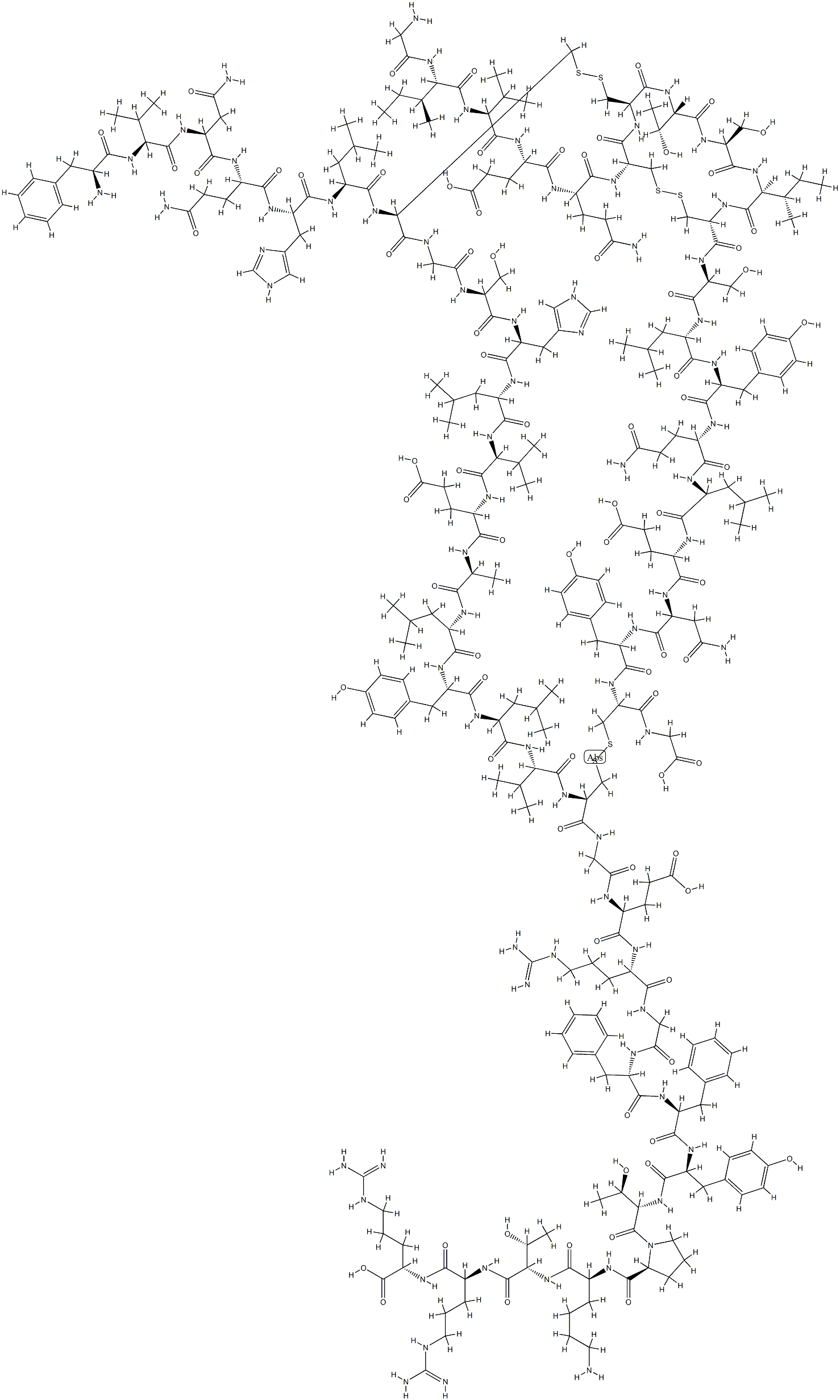description
Insulin glargine is a long-acting form of insulin used for the treatment of hyperglycemia caused by Type 1 and Type 2 Diabetes. Insulin is typically prescribed for the management of diabetes mellitus to mimic the activity of endogenously produced human insulin, a peptide hormone produced by beta cells of the pancreas that promotes glucose metabolism. Insulin is released from the pancreas following a meal to promote the uptake of glucose from the blood into internal organs and tissues such as the liver, fat cells, and skeletal muscle. Absorption of glucose into cells allows for its transformation into glycogen or fat for storage. Insulin also inhibits hepatic glucose production, enhances protein synthesis, and inhibits lipolysis and proteolysis. Insulin is an important treatment in the management of Type 1 Diabetes (T1D), which is caused by an autoimmune reaction that destroys the beta cells of the pancreas, resulting in the body not being able to produce or synthesize the insulin needed to manage circulating blood sugar levels. As a result, people with T1D rely primarily on exogenous forms of insulin, such as insulin glargine, to lower glucose levels in the blood. Insulin is also used in the treatment of Type 2 Diabetes (T2D), another form of diabetes mellitus that is a slowly progressing metabolic disorder caused by a combination of genetic and lifestyle factors that promote chronically elevated blood sugar levels. Without treatment or improvement in non-pharmacological measures such as diet and exercise to lower blood glucose, high blood sugar eventually causes cellular resistance to endogenous insulin, and in the long term, damage to pancreatic islet cells. Insulin is typically prescribed later in the course of T2D, after several oral medications such as [DB00331], [DB01120], or [DB01261] have been tried, when sufficient damage has been caused to pancreatic cells that the body is no longer able to produce insulin on its own. Available as the brand name product Lantus, insulin glargine has a duration of action up to 24 hours allowing for once-daily dosing, typically at bedtime. Due to its duration of action, Lantus is considered "basal insulin" as it provides low concentrations of background insulin that can keep blood sugar stable between meals or overnight. Basal insulin is often combined with short-acting "bolus insulin" such as [DB00046], [DB01309], and [DB01306] to provide higher doses of insulin that are required following meals. Use of basal and bolus insulin together is intended to mimic the pancreas' production of endogenous insulin, with a goal of avoiding any periods of hypoglycemia. Insulin glargine is also available as the biosimilar, or "follow-on" product, Basaglar in the US and as Abasaglar in the EU. As of 2015, insulin glargine was reformulated by Sanofi as the product Toujeo in an extra-concentrated form containing 300IU/mL (compared to 100IU/mL contained in Lantus). Use of the higher concentrated Toujeo as compared to Lantus results in slightly different pharmacokinetics, with a later onset (up to 6 hours) and duration of action (up to 30 hours). In 2021, another biosimilar, Semglee (insulin glargine-yfgn), became the first interchangeable (with Lantus) biosimilar insulin to receive FDA approval. Insulin glargine is produced by recombinant DNA technology using a non-pathogenic laboratory strain of Escherichia coli (K12) as the production organism. Insulin glargine differs from endogenous human insulin by the replacement of an asparagine residue at position A21 of the A-chain with glycine and addition of two arginines to the C-terminus (positions B31 and 32) of the B-chain. The resulting protein is soluble at pH 4 and forms microprecipitates at physiological pH 7.4 allowing for the slow release of small amounts of insulin glargine, giving the drug a long duration of action and no pronounced peak concentration. Without an adequate supply of insulin to promote absorption of glucose from the bloodstream, blood sugar levels can climb to dangerously high levels and can result in symptoms such as fatigue, headache, blurred vision, and increased thirst. If left untreated, the body starts to break down fat, instead of glucose, for energy which results in a build-up of ketone acids in the blood and a syndrome called ketoacidosis, which is a life-threatening medical emergency. In the long term, elevated blood sugar levels increase the risk of heart attack, stroke, and diabetic neuropathy.
